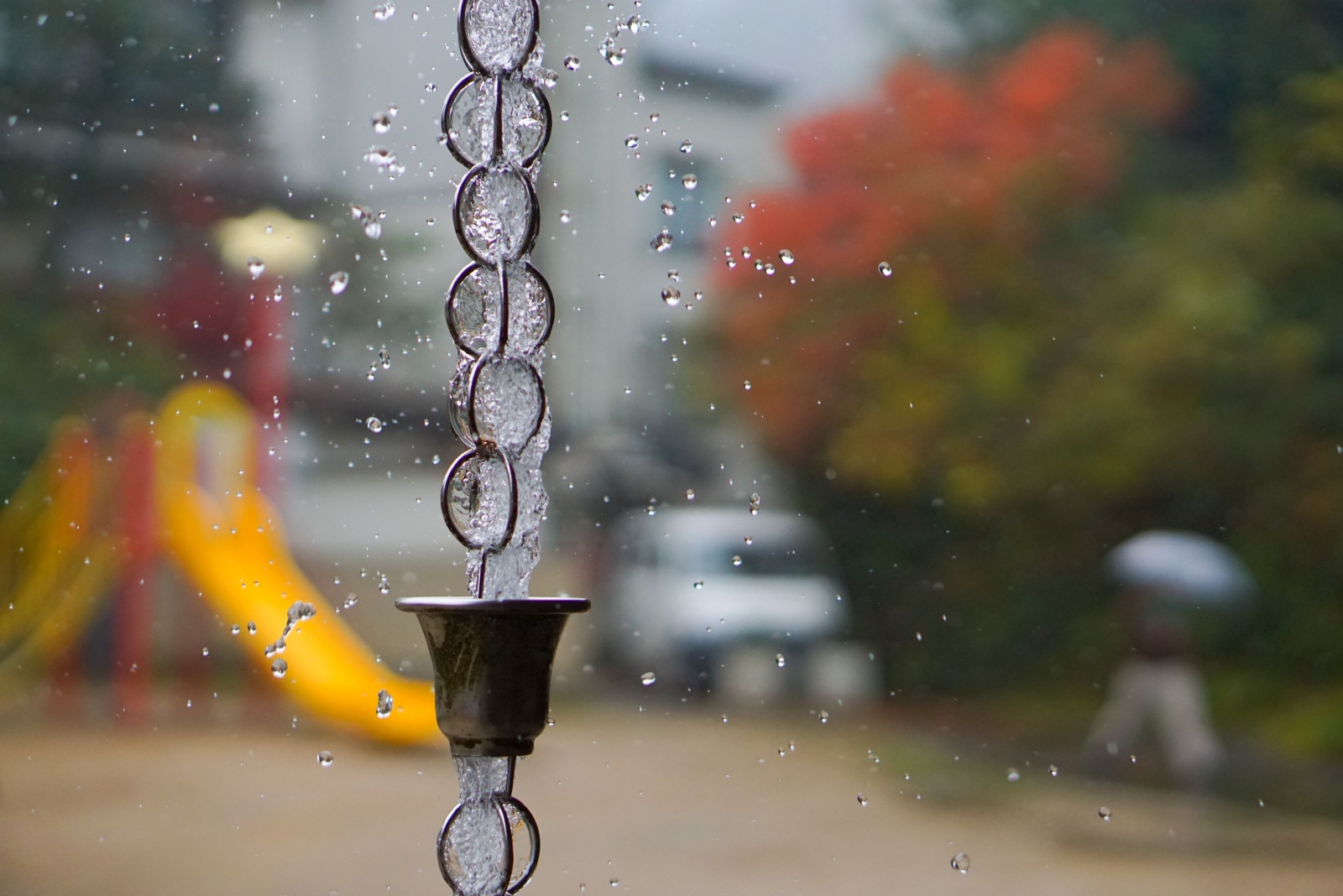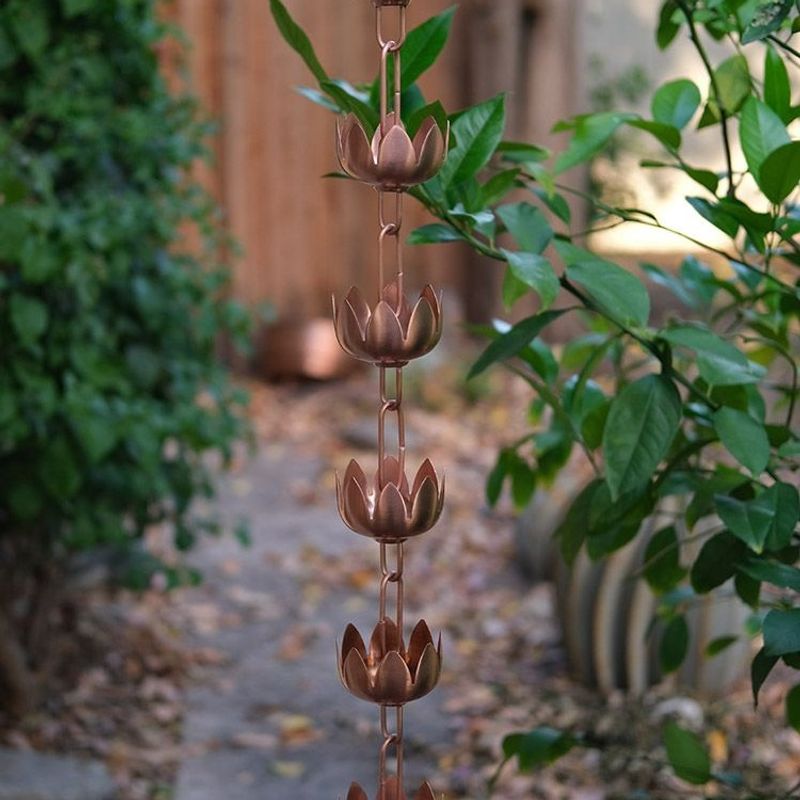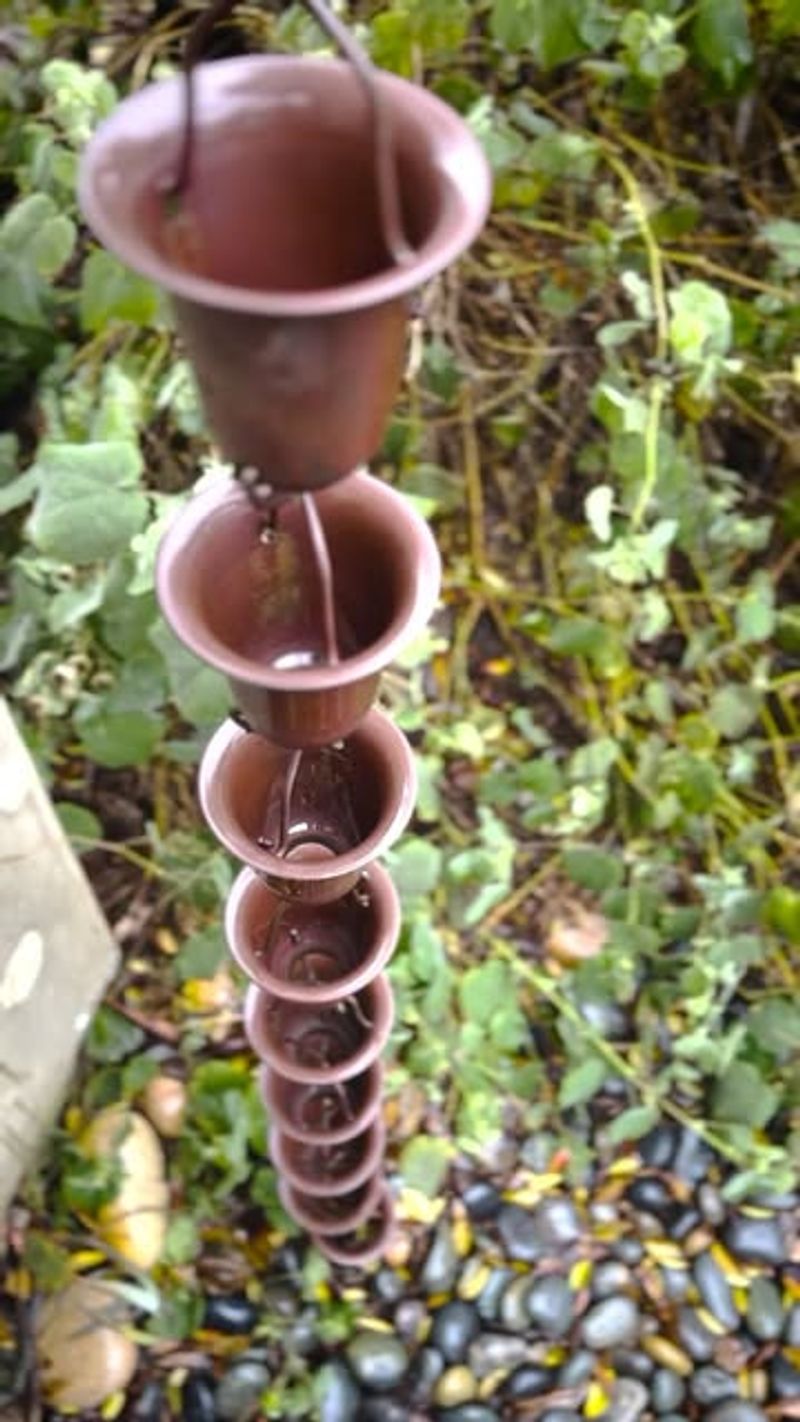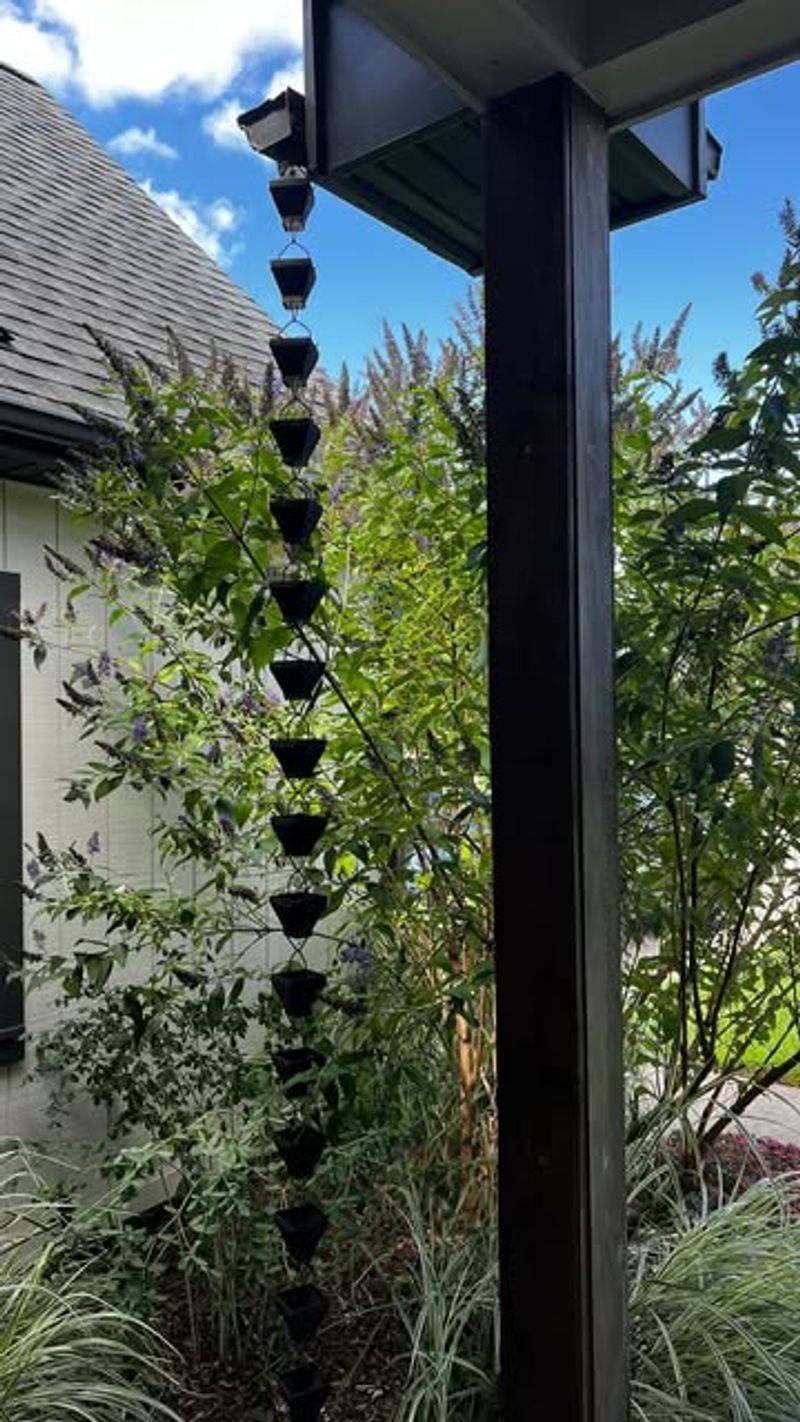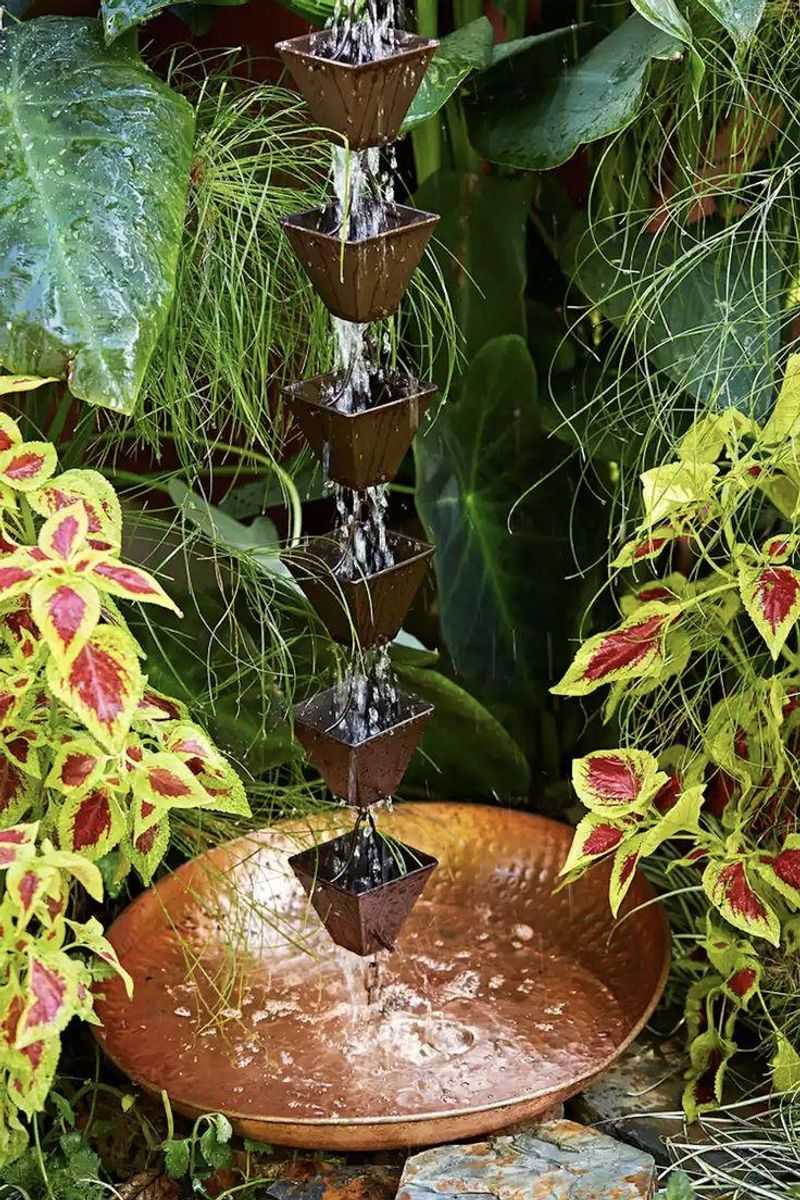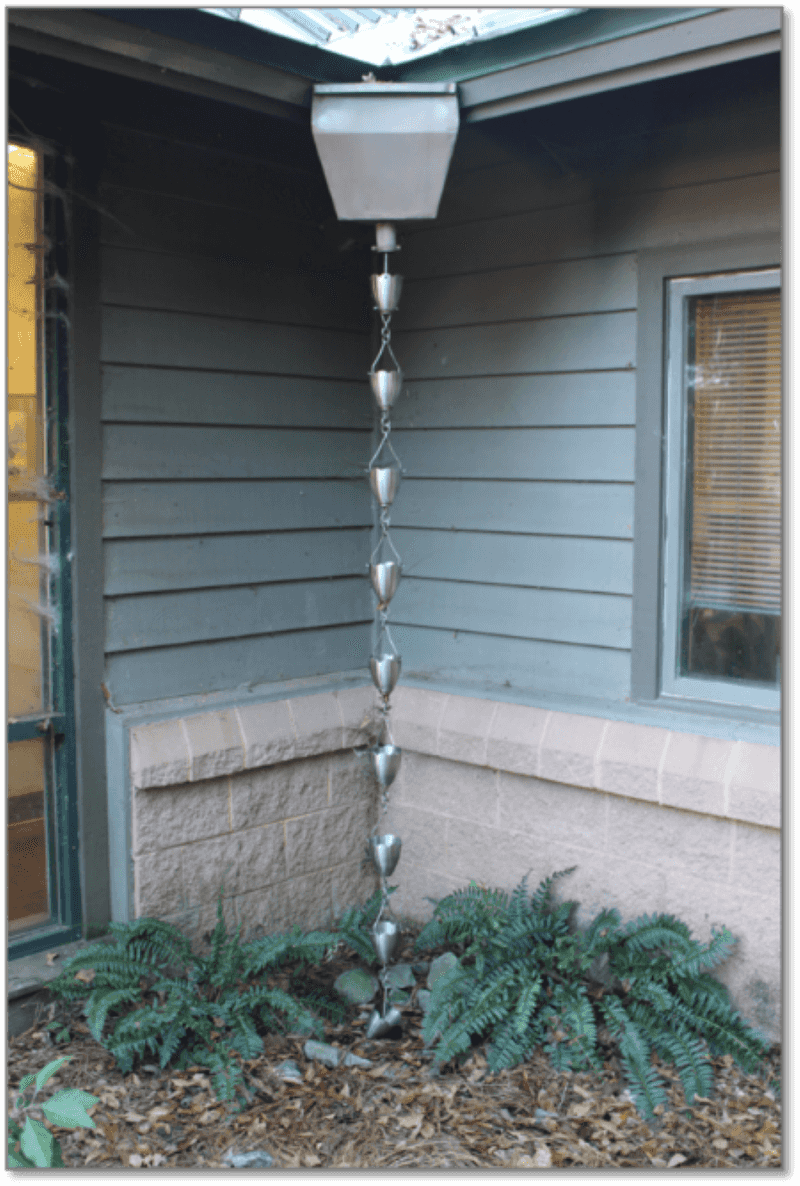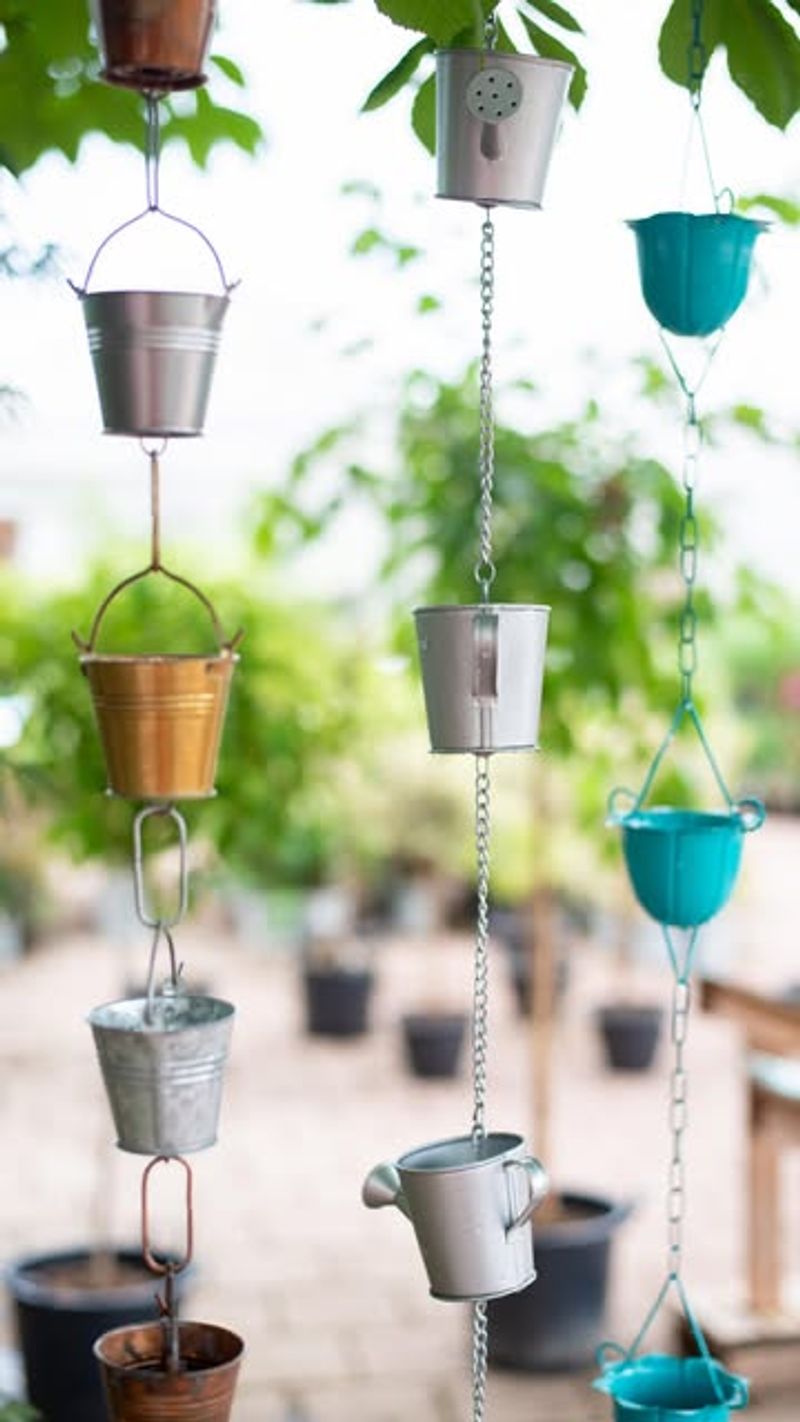Rain chains are a stylish twist on the standard downspout, turning a practical feature into something eye-catching. In Missouri, where spring storms and summer showers are frequent, they’re both functional and beautiful.
They guide water gracefully while adding curb appeal. Installing one is a quick weekend project that doesn’t require fancy tools or a big budget. You can find ready-made options or get creative with materials like copper cups or linked chains. Either way, it’s a simple upgrade with big visual impact.
Beyond the charm, rain chains help manage runoff and protect your foundation. They’re a smart, budget-friendly way to enhance your home—especially in Missouri’s ever-changing weather.
1. Missouri’s Climate Makes Rain Chains Practical
Missouri receives an average of 43 inches of rainfall annually, making proper water management essential for homeowners. This consistent precipitation creates perfect conditions for rain chains to showcase their functionality.
During our state’s famous thunderstorms, rain chains transform ordinary downpours into mesmerizing water displays. I’ve noticed they handle moderate Missouri rainfall beautifully, though in extreme downpours, they may splash more than traditional downspouts.
The freeze-thaw cycles in our winters actually create stunning ice formations on rain chains, turning them into temporary sculptures during cold snaps.
2. Materials You’ll Need For An Easy Installation
Gathering supplies is straightforward and won’t break the bank. For a basic setup, purchase a rain chain (copper is popular but aluminum works too), a gutter adapter or clip, and optionally a decorative basin or rock arrangement to catch water below.
Hardware stores throughout Missouri carry these items, but I found better selection online. My local garden center in Springfield offered surprising variety, including custom-made options by Missouri artisans.
For tools, you’ll only need household basics: measuring tape, pliers, and possibly a drill with metal bits if modifications to your gutter are necessary.
3. Step-By-Step Installation Process
Start by removing the existing downspout from your gutter. Keep the screws if you want to reinstall it later. Position your gutter adapter in the hole where the downspout connected.
Thread your rain chain through the adapter until it hangs at your desired length. For Missouri homes with basements, ensure the chain extends far enough to direct water away from your foundation.
I once tried skipping the proper adapter and regretted it after the first storm! The final step involves securing the bottom of the chain, either by anchoring it to the ground or setting up a decorative basin.
4. Garden Benefits Beyond Beauty
Rain chains slow water flow, reducing soil erosion around Missouri gardens. This gentler delivery helps prevent damage to delicate plants that might otherwise get battered during our heavy spring downpours.
The slowed water creates perfect opportunities for rain harvesting. Place a decorative barrel or basin beneath to collect free water for your garden’s thirsty plants during summer dry spells.
Native Missouri plants like coneflowers and black-eyed Susans particularly appreciate the consistent moisture provided by strategically placed rain chains. For me, this natural irrigation system has reduced my summer watering chores significantly.
5. Design Options That Complement Missouri Homes
Cup-style chains work wonderfully for Missouri’s occasional heavy downpours, efficiently channeling larger volumes of water. Link-style chains offer a more delicate appearance and pleasant tinkling sound during gentle rains.
Material choices matter in our variable climate. Copper develops a beautiful patina over time but costs more. Aluminum and steel options resist our freeze-thaw cycles well and come in various finishes.
Consider designs that reflect Missouri’s natural beauty – chains featuring leaf shapes, acorns, or even local wildlife motifs blend perfectly with our state’s outdoor aesthetic. I noticed my neighbors admiring my oak leaf design that matches our abundant Missouri oak trees.
6. Maintenance Tips For Missouri’s Seasonal Changes
Fall brings colorful foliage but also leaves that can clog your rain chain. A quick weekly check during autumn keeps things flowing freely. Simply remove any trapped debris by hand or with a gentle spray from your garden hose.
Winter requires minimal preparation. Unlike downspouts, rain chains rarely freeze solid due to their open design. If ice forms during Missouri’s coldest days, avoid forcing it off as this might damage the chain.
Spring storms might loosen your chain’s attachment points. I check mine after particularly windy weather, which happens frequently in our Midwest springs. This simple habit has prevented any surprise detachments during heavy rains.
7. Cost Savings Compared To Traditional Downspouts
Traditional aluminum downspouts for Missouri homes typically cost between $5-10 per foot installed professionally. A quality rain chain ranges from $60-150 total, making it comparable or cheaper when you factor in professional installation costs for downspouts.
DIY installation eliminates labor expenses entirely. The tools required are likely already in your garage, unlike specialized downspout installation equipment. This makes rain chains especially budget-friendly for the handy Missouri homeowner.
Long-term maintenance costs favor rain chains too. They don’t dent like metal downspouts during our hailstorms, and they’re easier to clear when clogged. I’ve saved hundreds in repair costs since switching five years ago.

